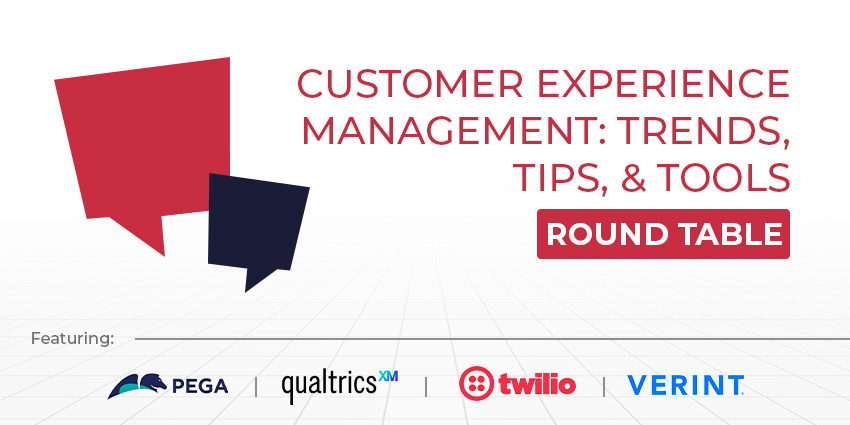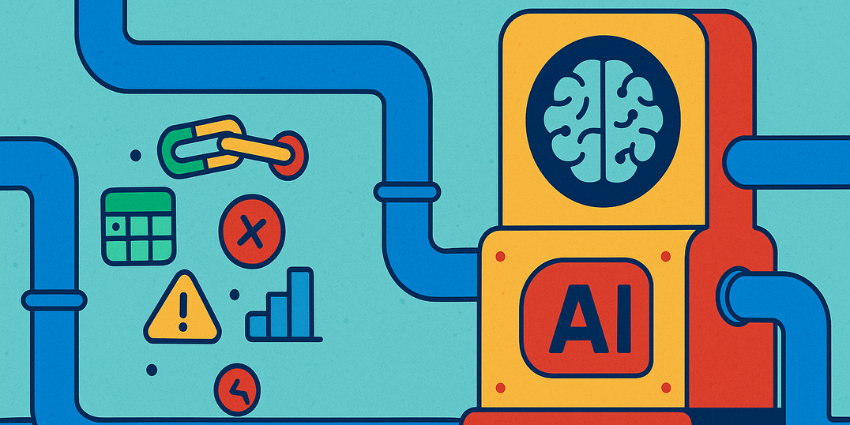Customer-facing functions, like service, sales, and marketing, have worked in isolation for too long.
However, many CX leaders now sense an opportunity to look at what’s happening across the broader customer journey lifecycle and consider how other teams’ actions affect them.
Keith Dawson, Director of Research for Customer Experience at ISG, picked up on this trend and recently urged functions to:
“Look for ways to smooth the bumps between silos. Increasingly, that’s both possible and necessary.”
As they do so, companies may align their objectives and collaborate to design, deploy, and manage customer journeys.
They may also share intelligence, technologies, and even coaching, embracing the art of customer experience management.
That’s a practice that many have banded about, but few have embraced to drive experience-led growth. Yet, as Dawson suggests, it’s making a comeback in a big way.
Recognizing this, we invited four CX specialists to weigh in. They are:
- Simon Thorpe, Director of Global Product Marketing for Customer Service & Sales Automation at Pegasystems
- Matt Trickett, Experience Management Strategist at Qualtrics
- Sam Richardson, Executive Engagement Director, EMEA & APJ at Twilio
- Ram Swery, Vice President, Go-To-Market and Consulting Services at Verint
Below, each industry expert shares their top customer experience management trends, tips, and tools for 2025 and beyond.
Customer Experience Management Trends
New Uses for Voice of the Customer (VoC) Data Are Emerging
Swery: A key trend reshaping CX is integrating VoC data with AI to reduce friction and increase task completion.
Indeed, more brands are using VoC insights to personalize and streamline the final steps of the customer journey, where conversions happen.
While AI enables dynamic journey orchestration, the combination of AI and VoC empowers brands to identify and remove barriers in real time. This “last mile” focus ensures that critical moments, like sign-up or checkout, are seamless and successful.
As digital journeys become more complex, this trend is helping brands drive revenue and loyalty by making every interaction count.
Lean, Expert Teams Replace Large Front-Office Support Groups
Thorpe: Over the next three to five years, lean, expert teams supported by AI and automation will replace the traditional model of large front-office teams handling tiered customer support. This shift is not just theoretical; it is already well underway.
Organizations are increasing their technology and transformation budgets with a major focus on automated customer service that will replace and augment customer service reps. This transformation and urgency to invest in more agentic technologies is resulting in many organizations moving away from hiring more reps and instead investing in scalable, AI-driven systems.
Hyper-Personalization Becomes Real, Beyond Marketing
Trickett: One of CX’s most significant emerging trends is the demand for hyper-personalization.
Today’s customers expect more than efficient service; they want interactions that reflect a deep understanding of who they are.
Yet, Qualtrics research shows a disconnect: 42 percent of UK consumers say a brand has broken a promise in the past year, and only 38 percent feel genuinely listened to. This disconnect fuels a ‘computer says no’ culture and leaves customers feeling ignored and undervalued.
At the same time, while concerns about AI replacing human interaction are increasing, there’s still an opportunity. If brands can show that AI makes experiences more seamless, relevant, and human, not less, they can rebuild trust.
Ultimately, the businesses that use data and technology to deliver emotionally intelligent, highly personalized experiences will be the ones that earn long-term loyalty.
The Great AI Rethink Is Underway
Richardson: After initially rushing to adopt AI solutions such as chatbots and IVR systems, organizations are now working to finetune how they’re using these technologies for customer experience.
Natural language processing (NLP) and customer sentiment analysis have both reached the point where AI-powered tools can anticipate customer needs and adapt in real-time.
According to the Twilio State of Customer Engagement Report, consumers are optimistic about these advances, with 71 percent believing AI will positively impact their experience.
Customer Experience Management Tips
Embrace Agentic AI (with Guardrails!) as the Future
Thorpe: One best practice for improving customer experience management is implementing agentic AI with robust governance and clear boundaries.
While AI agents can greatly enhance efficiency and personalization in customer service, giving them unchecked autonomy, such as relying solely on prompt-based configurations, can lead to inaccuracies and inconsistent experiences. This is particularly risky in regulated industries, where compliance and reliability are critical.
To avoid these pitfalls, businesses should ensure that their AI agents operate within well-defined guardrails and adhere to enterprise policies. This means incorporating workflow-based controls, human-in-the-loop oversight for sensitive tasks, and regular audits of AI interactions.
By doing so, organizations can leverage agentic AI to deliver faster, more consistent, personalized services, while minimizing risks and maintaining customer trust.
Build Customer Trust with Responsive Service
Richardson: While personalization is still important, it’s just one piece of the puzzle. Organizations need to keep up with their customers as much as they know them in the first place. This comes about by organizations breaking down data silos and finding ways they can keep pace with consumers’ constant change.
This is key to building compelling customer experiences, with Twilio research finding responsive customer service has taken the lead as the best way brands can build customer trust, at 55 percent.
Pivot to Deliver More Proactive Support
Swery: Businesses must quickly detect and resolve customer struggles to improve CX.
Today’s consumers expect intelligent, frictionless digital journeys. If they can’t complete a task easily, they’ll leave.
Indeed, Verint’s State of CX Research shows that 78 percent of consumers would consider switching brands after just one poor interaction, up from 67 percent in 2024.
With more journeys now fully digital, brands must proactively support customers at every step.
For example, a customer renting a storage unit can complete the entire process online. However, they may encounter an unexpected issue. To safeguard revenue, businesses need systems that identify these friction points and intervene instantly to keep customers moving forward.
Convene Customer Experience Teams to Govern AI
Trickett: Leveraging AI capabilities at key journey touchpoints can drive efficiency and increase productivity. The most successful organizations will ensure AI aligns with long-term strategy and is governed by a centralized team, which receives leadership buy-in.
An understanding of AI’s role within an organization enables them to determine how new elements, such as agentic AI, can be adopted into the business and where it will have the greatest impact.
When deployed well, AI agents integrate seamlessly with existing systems, surfacing relevant data the moment a customer engages. This enables agents to immediately understand who the customer is, their journey, and how best to help, delivering faster, more empathetic support.
The result is a balance: customers feel recognized and understood, while employees are empowered to deliver a better service. Efficiency and empathy go hand in hand, and that’s the future of CX.
Customer Experience Management Tools
Pegasystems’s Agentic AI
Thorpe: Pega’s agentic AI is not just about building bots; it’s also about embedding intelligence into workflows to enable smarter automations.
The following features show how Pega’s agentic AI turns workflows into real business outcomes:
- Outcome-Oriented Architecture: Pega AI agents use the Pega Center Out business architecture that breaks down multi-step processes into microgoals and allows businesses to pull in the data and channels needed to achieve them.
- AgentX API: The new Pega Agent Experience (AgentX) API enables brands to automate many of the multi-step processes the architecture has helped break down.
- Self-Service at Scale: Pega self-service agents connect to back and middle office systems, go beyond simple Q&As and FAQs, and enable end-to-end fulfillment.
- Employee Enablement: AI agents automate more work out of the contact center and support employees with real-time guidance and automation, which helps them work faster and more effectively.
Qualtrics XM
Trickett: The largest area of opportunity across the front office sits with the contact center, specifically regarding agent support, upskilling, and coaching.
Traditional methods are often reactive, time-consuming, and inconsistent, but Qualtrics’ XM platform delivers real-time, personalized insights to frontline teams, increasing the business’s focus on omnichannel experience management.
Specifically, it uses Generative AI to provide capabilities including AI call summaries, AI-derived intelligent scoring, and automated coaching recommendations supported by AI-powered topic generation.
With this, agents gain clear, actionable feedback, and managers can also build targeted coaching plans based on real behaviors, not assumptions.
This approach doesn’t just lift service quality and speed; it also reduces admin overheads and boosts agent engagement and retention. It enables a culture of continuous improvement.
The Twilio Virtual Agent
Richardson: Twilio’s AI-powered virtual agent acts as a customer engagement flywheel. By pairing it with real-time customer data, it enhances, rather than replaces, human interactions with intelligent responses that streamline support and drive efficiencies.
Also, it can provide recommendations to human agents, generate conversation summaries and automated wrap-ups, and automate common tier-one support queries like order status and password requests.
Lastly, it allows businesses to offer 24/7 personalized support in a scalable way, making the best use of human agents.
The Verint Open Platform
Swery: Verint’s Open Platform enables real-time customer experience automation by turning customer feedback into immediate action.
While some VoC tools only identify issues, Verint collects both solicited and unsolicited feedback across all channels – web, call center, and in-store – and acts on it instantly. This allows brands to personalize and orchestrate the customer journey end-to-end.
For example, if a customer abandons their cart, Verint can automatically trigger a follow-up to re-engage them.
By combining data collection, AI, and CX Automation, Verint helps businesses reduce friction, improve satisfaction, and protect revenue across the customer journey.
Miss the previous CX Today roundtable? Catch up here: Generative AI in the Contact Center: What’s New in 2025?







